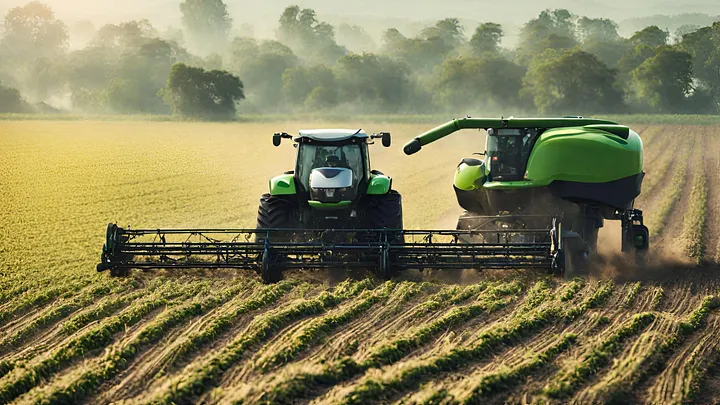This article contains an explanation of artificial intelligence and its application in agriculture
Introduction
Agriculture is a $5 trillion industry and the foundation of the global economy, according to research by the World Bank, it accounts for 4% of the global gross domestic product (GDP) and 25% in some developing countries highlighting the need for growth and innovation in the sector. Currently, with an annual population growth rate of 0.88% which is equivalent to an estimated 70 million people per year, there is a need for an equivalent growth rate in food production which can’t be achieved by traditional farming methods, this is where artificial intelligence comes to the forefront.
The world is currently turning to AI-powered technologies in new and amazing ways to produce healthier crops, control pests, monitor soil and growing conditions, organise data for farmers, assist with workload, and improve a wide range of agriculture-related tasks throughout the food supply chain. This article will highlight AI-powered technologies in the agricultural sector, as well as offer typical examples of popular applications.
The role of artificial intelligence in agriculture
Due to the rising global population and the need to increase food production, the implementation of advanced technology such as AI isn’t just innovation but necessary to maximize limited resources and arable land.
The adoption of AI technology is assisting farmers in improving their efficiency, reducing negative environmental impacts, and controlling and managing any averse natural disasters. The agriculture industry has openly and actively embraced AI to influence the overall output. Farmers benefit from the application of artificial intelligence to better interpret data insights such as temperature, precipitation, wind speed, sun radiation, and so on. The best aspect about using AI is that it will not eliminate the work of human farmers, but rather will improve their procedures.
Now, let’s move into what we gain from applying artificial intelligence in agriculture
Benefits of AI in agriculture
- Data-Enabled Decisions: Globally, we live in a data-driven world. While agriculture is typically traditional, there is much to be gained from AI-powered data analysis from predictive analytics to other forms of precision farming.
- Resource Optimization: AI optimizes agriculture by enabling precision farming, autonomous machinery, and crop monitoring for efficient resource use. It enhances water management through IoT sensors and predicts disease outbreaks, contributing to sustainable practices. Additionally, AI supports supply chain optimization with predictive analytics and ensures climate resilience by analyzing climate data. Farm management software and supply-chain procurement tools offer data-driven insights, aiding informed decision-making for overall resource optimization in agriculture.
Now that the foundation is set, let’s explore some ways AI can be implemented in agriculture.
Application of AI in agriculture
- Robotics: In recent times, robotics has proven to be a viable part of farming processes due to the need for better output and resource optimization. There are a variety of robotic applications, but name a few; Robotic weeding, Seeding, Harvesting and Crop maintenance.
- Precision Farming: Precision farming, also known as precision agriculture, involves using technology and data-driven approaches to optimize various aspects of agricultural production. The application of precision farming in agriculture offers several benefits, including increased efficiency, cost savings, and environmental sustainability. Here are some key applications of precision farming: Precision planting, precision irrigation, predictive analytics, farm management software, supply chain optimization. Technology has transformed modern agriculture, making precision farming a vital tool for improving efficiency, reducing environmental impact, and promoting sustainability in food production.
- Resource allocation: AI can analyze historical data on crop yields, weather patterns, and resource usage to optimize resource allocation. This includes determining the ideal mix of seeds, fertilizers, and pesticides for a given field.
Conclusion
The application of artificial intelligence in agriculture has taken great strides globally and in Africa from Farming management software, supply chain optimization tools to robotics and so many more. The potential benefits are tremendous and it is truly a revolution in the making, let’s look forward to more moving forward.
You made it to the end!
Trust this helps and see you in the next article.
Source : Medium

